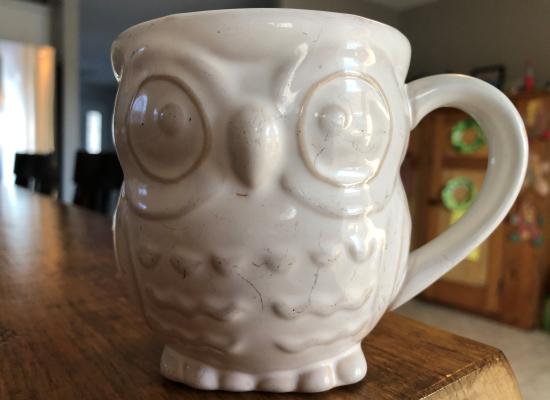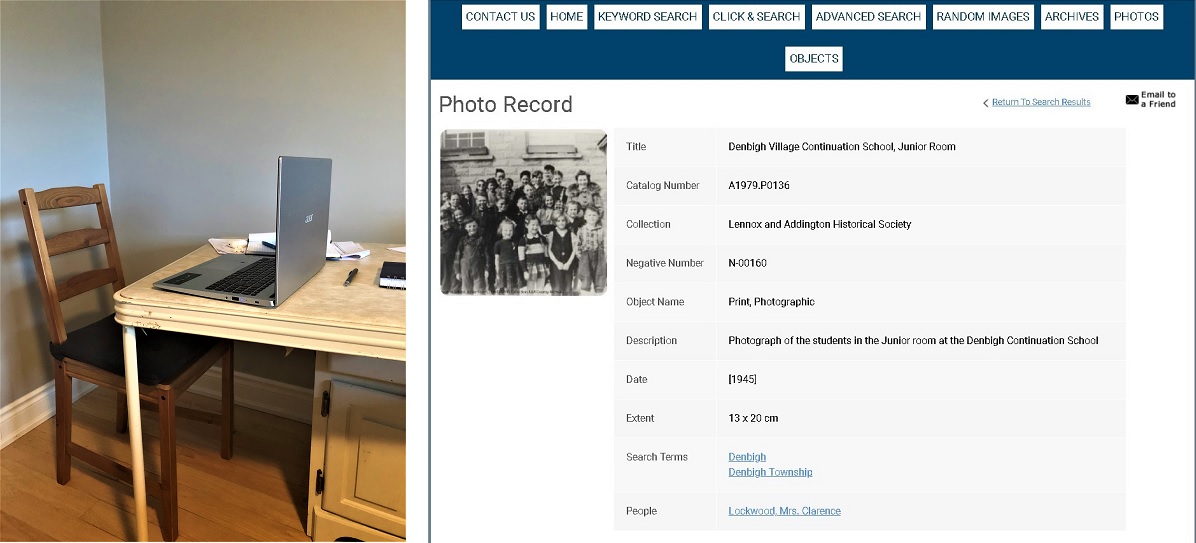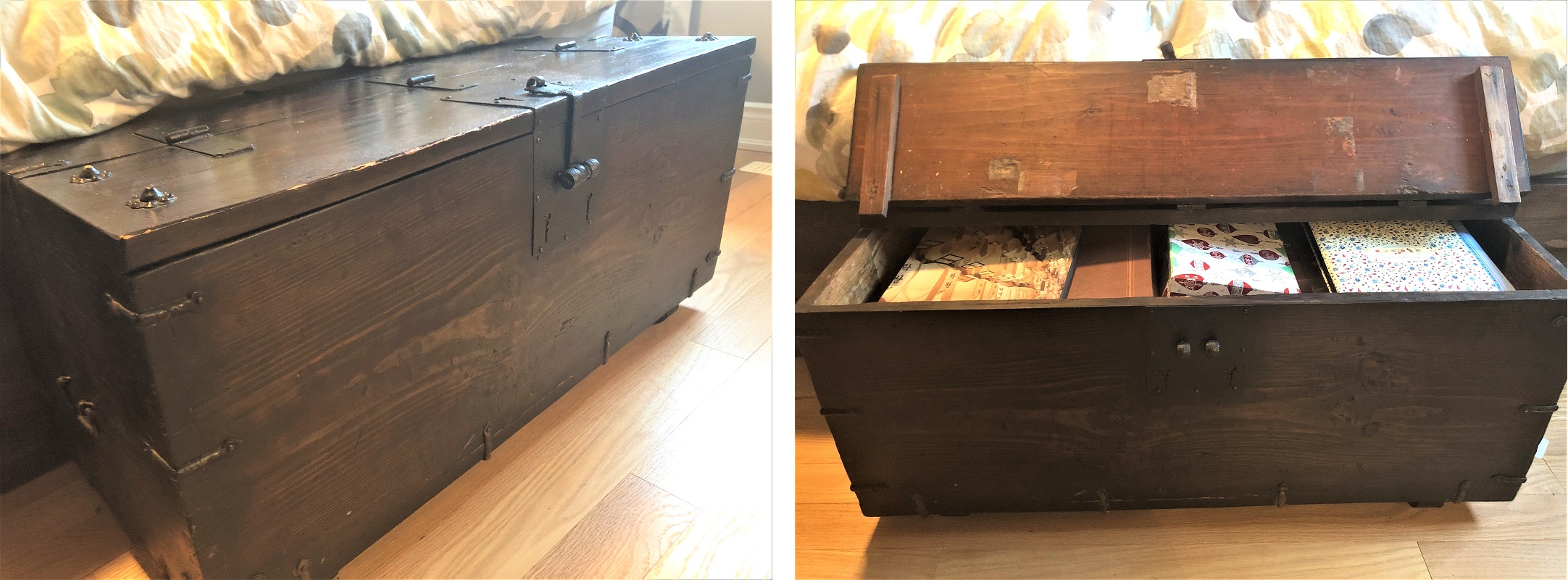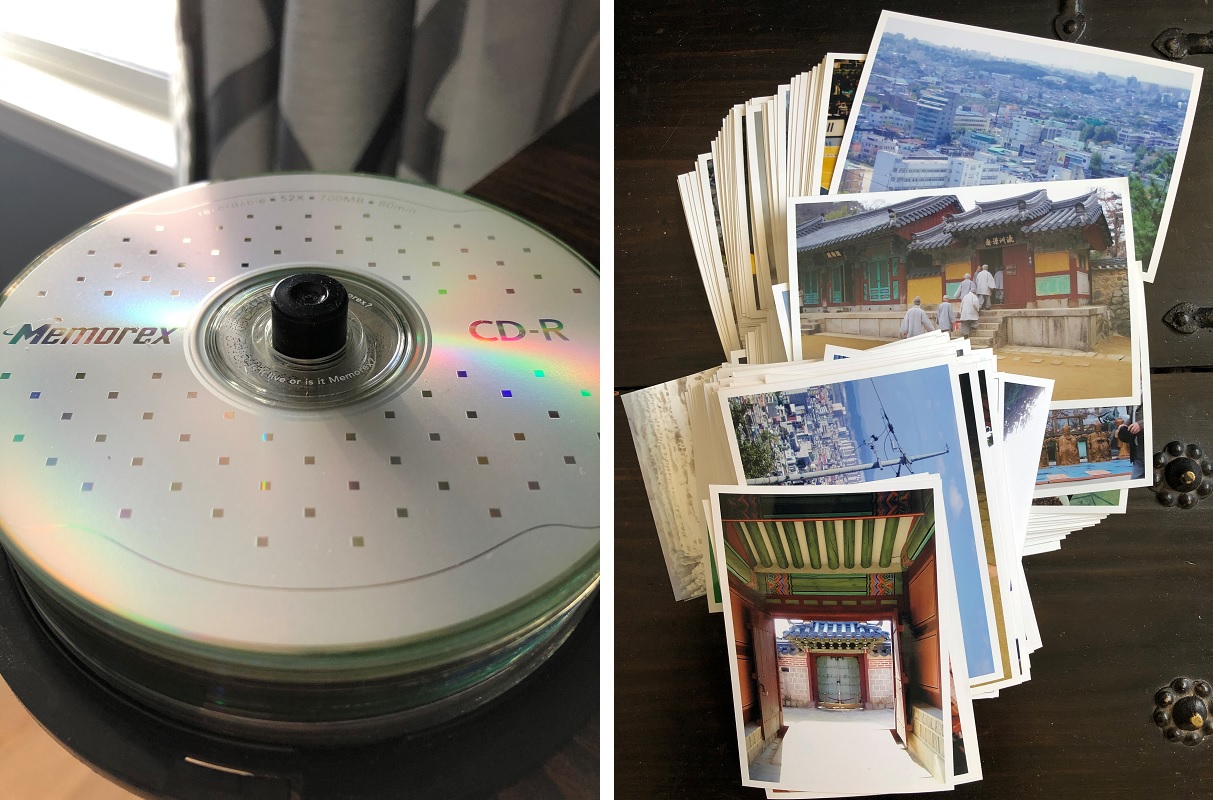
What’s a CD?
And other hard questions at home
Here we are again, at home, wondering how we all ended up in the Bill Murray movie Groundhog Day. If you missed JoAnne’s blog about her experience working from home, make sure to check it out. Below is a picture of my workstation at home. Between JoAnne and I, our home offices are very different.
Yes, I am using a folding card table tucked into the corner of my bedroom where I hide from my young children lest they figure out I’m in the house working away on the digital side of my job as archivist. The table has a soft top forcing my choice in coffee mugs to be a very important one (strong base needed).
A huge part of the digital side of what we do is uploading records for our collection into the online database. Michelle Barclay, our archival intern, and I are working on getting as many photographs online as possible. I won’t go into too much detail here but we’re adding records every week to the database,so keep watching.

Where the magic happens at home and an example of what can be discovered in our online database.
This time tucked away with my card table has also given me an opportunity to delve into how the archives moves forward with a digital preservation plan. Before I lose you, let me explain. We want our digital records to be accessible long after the technology required to access them is obsolete. Think VHS players. What do you do with a VHS tape without a VHS player? Unless you’re lucky enough to have the technology to convert a VHS tape to a digital file, you pay an expert to do it. What happens when the digital technology becomes obsolete to play those converted VHS files, and so on, and so on, you get the point. A preservation plan ensures that the digital files are always accessible to you, the people for which we collect and preserve the stories of Lennox and Addington.

The chest at the end of my bed holding decades worth of records in varying formats.
This project got me thinking about my own records. From the card table, I stare at the chest that holds my personal and family archive every day. One evening I opened the chest and pulled out CDs that contain digital photographs from my travels between 2004 and 2008. I lived in South Korea at that time, and travelled much of Southeast Asia. You can imagine the immense loss I would feel if the technology to view those went obsolete. We do strange things in the moment sometimes, like printing out hundreds of photographs because we don’t have a digital preservation plan (in my defense, I was a year away from starting my archival education when I did this).

When I pulled the CDs out of the box, I exclaimed, “oh, the photograph CDs” to which my daughter asked, “What’s a CD?”
Tough question. I lazily made up some jargon about how it holds information, could be music, could be photographs but she’s five. I could’ve told her it was a portal to Disney World and got the same response: glazed eyes and skipping feet right out of the room. Luckily, about four years ago, when my laptop at the time had a CD port, I transferred these photographs to an external hard drive (no more printing!). And guess what the experts say about the lifespan of an external hard drive? Five years. FIVE YEARS!
What do we do with this stuff when CD and DVD ports don’t come standard on laptops anymore and external hard drives have a short lifespan? The best we can, that’s what. You make bad decisions like printing photographs as a means of preservation and evaluate that plan a decade later. Right now, for me, it’s hoping the five year lifespan on an external hard drive is a worst case scenario with a transfer of files to a new hard drive in a few years. For the Lennox and Addington County collection, we ensure its longevity with the right technology that can bring it into the future. We will find a way to catapult the two hundred plus year old collection into the future two hundred years from now.
Why do I still have CDs and printed photos plus digital copies on a hard drive? Hard to let the backups go, I guess. I’ll keep plugging away at the L&A Archives digital preservation plan while keeping notes for future work on my own.
